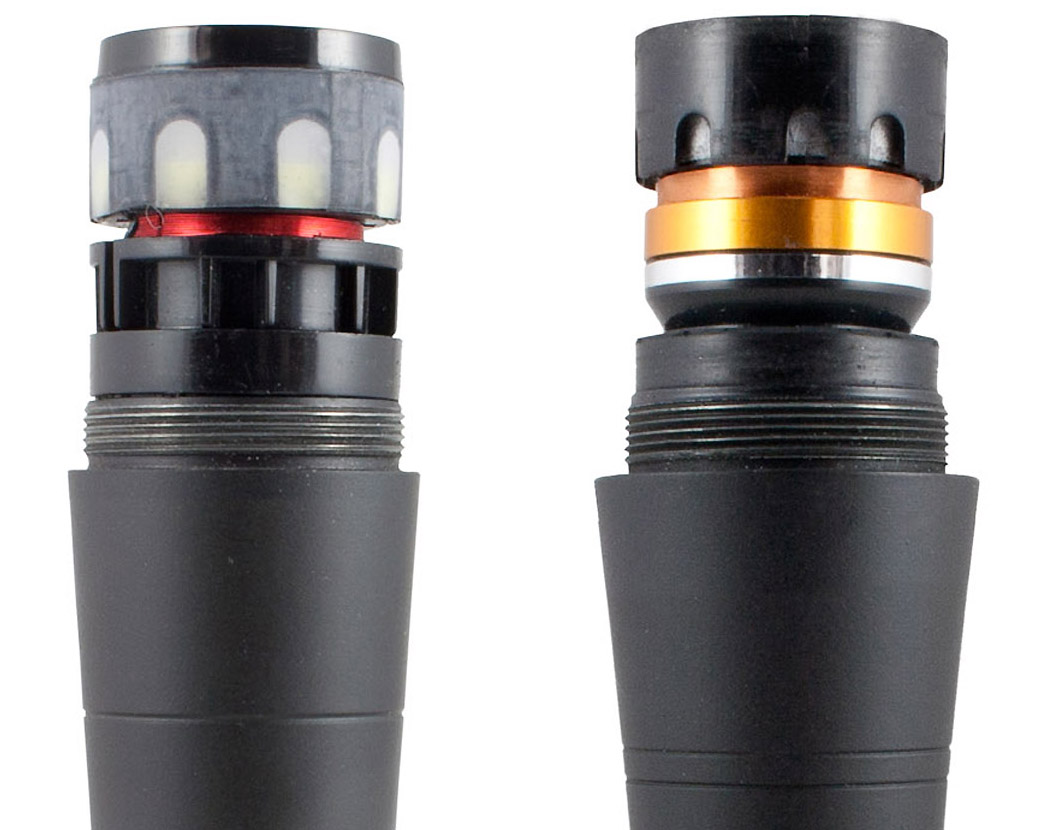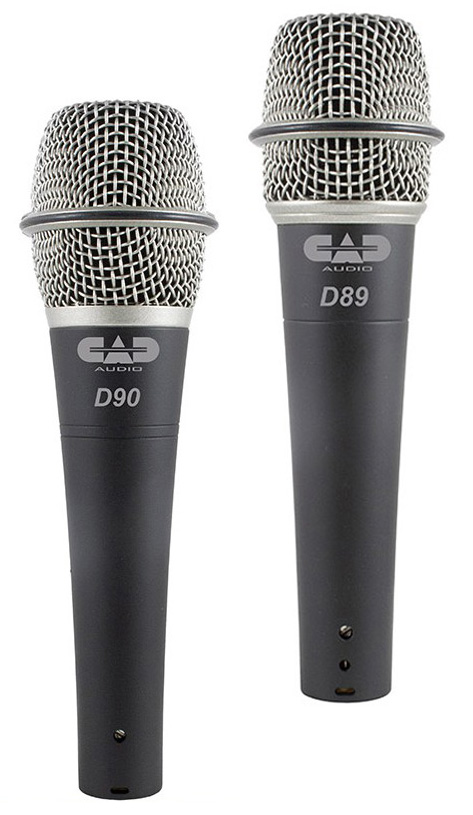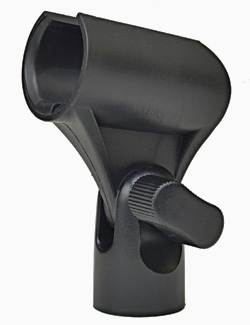
Road Test: CAD Audio D89 & D90 Dynamic Microphones

CAD Audio D89 and D90 dynamic microphones are part of the company’s new CADLive Series that’s designed for live performance while also fitting the bill for recording applications. They’re outfitted with proprietary Trueflex diaphragms for articulate response and PowerGap high-gauss neodymium magnets for a “hotter” signal.
Both models offer a supercardioid pattern. The D89 is marketed for instrument applications and has a stated frequency response of 50 Hz to 17 kHz, a sensitivity rating of -50 dBv (2.8 mV), and a maximum sound pressure level rating of 150 dB. It’s 6.5 inches long and has a steel windscreen with internal foam filter.
The D90 is a handheld vocal mic with a stated frequency response of 50 Hz to 16 kHz, a sensitivity rating of -51 dBV (2.8 mV), and maximum SPL rating of 150 dB. It’s slightly longer at 7.25 inches and also sports a steel windscreen that’s a bit bigger than the one on the D89.
Both models ship with foam-lined plastic storage cases and include a clip. Out of the box I was impressed with how nice these mics look and with the rugged, heavy-duty windscreens. They’re designed and built for whatever any live stage can dish out.
The other thing I initially noticed is that the clip has a wingnut to tighten the angle of positioning. I could easily crank down on the wingnut and lock it into one position or adjust it a little looser for re-positioning the mic, which comes in handy for shows with different performers.
Trying Them Out
As with all Road Test gear, the first stop is my bench for evaluation. Plugged into an adjacent portable PA, I quickly found that the D89 has a nice, tight supercardioid pattern with good rejection from the sides and rear. I also found that it has higher output than the D90 as well as a more pronounced proximity effect when you get right on the mic.
The D90 seems to have a slightly tighter pattern with better side and rear rejection than the D89, and it also exhibits less proximity effect. Both mics sounded great with the male voices in the shop, with the D90 getting my vote as more natural sounding on the typical male voice.

I grabbed a Fender Blues Jr tube guitar combo and plugged in a Stratocaster. I tried both mics on the amp and listened to them with headphones and through a PA loudspeaker. I also recorded some clean and distorted guitar tones and critically listened over a pair of studio monitors. Both mics sounded very good on the amp, with the D89 having a more rounded sound, especially in the bottom end.
Next I pulled a 13-inch rack tom and a 16-inch floor tom from a maple kit off the shelf and tried both mics with them. Again, the D89 seemed to have a fuller sound in the lower regions, but both mics sounded great. The last shop experiment was with a maple snare drum, where I tried both top and bottom placements, recording both snare hits and rim shots. My favorite recording was with the D90 on the top head about 4 inches away from the drum, but both mics really sounded quite nice on that snare.
My verdict: both are equally capable with vocals or instruments, but the D89 sounds a bit better on instruments while the D90 does a little better on vocals. Satisfied that the mics were working properly, I took them out to several gigs.
